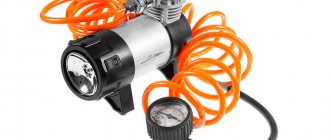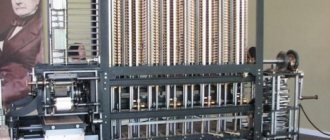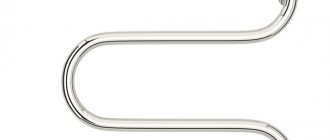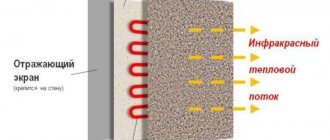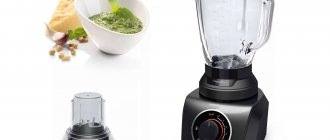With the onset of spring, the agricultural machinery market comes to life. Farmers are beginning to look for agricultural machines for their summer cottages and gardens, capable of cultivating large plots of land and medium-sized areas. Walk-behind tractors are especially popular among agricultural machines. And although this type of equipment is expensive, it justifies the cost, because the number of operations it performs throughout the year more than pays for the purchase.
Depending on the power plant, walk-behind tractors are diesel, gasoline, battery and electric. What walk-behind tractors do modern gardeners use and what are their differences, we will look at in this article.
Diesel walk-behind tractors
Diesel walk-behind tractors are the most powerful technical means belonging to the heavy class. The powerful technical characteristics of diesel equipment make it possible to use it on difficult land plots. Let's study the list of the most popular diesel walk-behind tractors today.
Centaur
The Centaur walk-behind tractor from the Chinese manufacturer can be presented in both diesel and gasoline versions. The engine is selected according to the power of the unit. This technique can be used to plant and harvest crops, level sandy soils, mow, cultivate, hill and weed beds.
Model Centaur 1081-D
The advantages of the walk-behind tractor include:
- ability to work on hilly terrain;
- ability to work near bushes and fences;
- ease of maintenance;
- maneuverability.
Plus they are also in a multi-stage gearbox, which allows the Centaur walk-behind tractor to operate in different speed modes.
Bison
Models of Chinese walk-behind tractors of the Zubr brand have gained popularity due to their unpretentiousness and ability to work under intense conditions for a long period. Another important advantage of the brand is its high degree of maintainability. A simple design solution and the availability of spare parts make it possible to reduce unit downtime to a minimum.
Model Bison JR-Q79E
The range of this brand includes models of different power. The most popular model is the Bison with a capacity of 10 hp. With. This power allows you to cultivate virgin soil and heavy soils. The walk-behind tractor of this model is quite maneuverable (it can turn around in one place) thanks to the presence of a differential lock.
A large range of attachments allows units of this brand to perform planting, harvesting, weeding, cultivating, mowing and hilling crops.
Hopper
The multifunctional Russian unit Khoper goes on sale in diesel and gasoline versions. When choosing a model, you should take into account that the diesel version has more power, a huge engine life and lower operating costs.
Model HOPER 1100 9DS
Advantages of the Hopper brand:
- small overall dimensions, stability and maneuverability;
- ability to adjust the steering wheel;
- multifunctionality (the unit can plow the site, plant and harvest crops, clean up the area, remove snow, and care for lawns);
- pneumatic wheels (provide good grip on the ground);
- the ability to install various attachments;
- ease of operation.
Neva
An important feature of Russian models of Neva walk-behind tractors is the ability to choose the optimal transmission option. At the same time, engines in such agricultural machinery can be installed both domestically and imported.
Model NEVA MB-23
The main advantages of Neva walk-behind tractors:
- The equipment is equipped with high-quality engines with high efficiency and good service life (Briggs & Stratton, Subaru and Honda brands).
- A perfect gear shift system allows you to select the appropriate speed for each type of work.
- Walk-behind tractors require working with different types of attachments, and they also allow the use of a dump truck.
- All mechanisms of the unit are protected from damage and dust.
Belarus
The model range of Belarus brand walk-behind tractors is presented in different variants. However, models 05, 06, 08, 09 and 12 gained popularity due to their reliability and perfectly thought-out functionality.
Motoblock Belarus
Advantages of walk-behind tractors Belarus:
- the ability to connect various removable equipment to the equipment;
- small overall dimensions;
- ease of maneuvering;
- ease of repair at home and availability of spare parts;
- ease of operation.
By what principle is it better to choose a walk-behind tractor?
A walk-behind tractor is a mobile multifunctional power energy single-axle equipment based on a single-axle chassis. The second name, which was in use until 1980 in the USSR, is a small-sized pedestrian tractor .
On the territory of the Republic of Belarus there is a large selection of walk-behind tractors of any power, price range, design solution, color, brand, etc. A buyer who decides to buy a walking tractor invariably has questions: “So which unit should I choose for myself?” There are many options, starting from forums and searching for reviews on specific walk-behind tractors on the popular sites market.yandex.ru, onliner.by, or on the popular specialized resource askbeforebuy.ru, forumhause.ru
The second option is word of mouth (advice from a neighbor or relative). In life, after all, there will definitely be a neighbor who recently bought a walk-behind tractor and will tell you all the main points about operation. It works. Thus, entire villages buy one model in one store. The third option is to call our phone +37529 1831114, where the managers of our specialized motorcycle and cultivator store will be able to give you professional advice. Now let’s try to highlight the main points when choosing a walk-behind tractor in this article.
How to choose a walk-behind tractor for a summer house and garden.
Why do you need a cultivator?
Determine for yourself what exactly you need: a walk-behind tractor or a cultivator. In most cases, it is enough for users to purchase a heavy cultivator to perform certain work (cultivation, hilling, plowing). The cultivator is lighter and more maneuverable when used in a greenhouse. Also, if you have restrictions on physical activity, it is better to opt for high-quality medium cultivators.
The purpose of the walk-behind tractor
The walk-behind tractor is capable of performing a wider range of operations with the appropriate attachments: cultivation, hilling, plowing, transporting goods, mowing grass, snow removal, watering the garden, harvesting potatoes, etc. The design difference between a classic walk-behind tractor and a heavy cultivator is that the walk-behind tractor has a large mass (from 70 kg), is equipped with a more powerful engine (petrol or diesel) with a power of 4 hp, and often has a shaft or power take-off pulley (through which the drive goes to various mounted power equipment). So, if you decide that you need a cultivator, then we suggest that you read the article “how to choose a cultivator.” Otherwise, I suggest you familiarize yourself with the criteria for choosing walk-behind tractors. The first thing you should take a closer look at is the scope of work and the availability of the desired functions.
The scope of work will depend on three main parameters:
- The type of soil you will be working (soft, medium, heavy soil or virgin soil).
- Total processing area.
- Functions of the walk-behind tractor.
Soil type.
The main parameter here is the maximum torque and power of the engine . The second is the mass of equipment. If the walk-behind tractor does not have sufficient mass, then maximum traction with the ground will not be achieved and the walk-behind tractor will “slip” when working with a plow or hiller. The mass of the unit must be at least 70 kg for medium light soil, for heavy and virgin soil the mass must be at least 95 kg. A diesel “foot tractor” has more torque compared to a gasoline one (i.e. it has more traction). Negative aspects include difficulties with repairing diesel engines and seasonal restrictions on work (ambient temperatures not lower than + 2 degrees Celsius). All walk-behind tractors weighing up to 150 kg, when working on any hard soil with a plow, potato digger or hiller, must be equipped with metal wheels, hereinafter referred to as lugs.
Total processing area
The total processing area is determined based on the productivity of the unit. This value is quite arbitrary, as it depends on many factors: the type of soil hardness, the type of operation being performed (cultivation, hilling or plowing). There is a direct proportionality to the performance of the walk-behind tractor from the engine power and the processing width. So, conditionally, all walk-behind tractors can be divided according to the total processing area:
- Processing area up to 1500 m2 – device power from 3.5 to 4 hp. ,with processing width up to 800 mm. The Viking HB 685 walk-behind tractor has proven itself to be excellent in this segment (Figure 1).
- Processing area up to 3000 m2 - equipment power from 6 to 7 hp. with processing widths up to 900 mm. A huge number of choices among brands such as Neva MB 2B 6.5 PRO, Neva MB 2C-7.0 PRO, Fermer FM 700M, 701 pro.
- Processing area up to 1 hectare (10,000 m2) - powerful units with power from 9 to 10 hp. Neva MB 23B-10PRO, Fermer FM 901-905, FDE 1001, Belarus 0.9N.
Figure 1 - Lightweight unit with Viking HB 685 worm gearbox
You need to determine for yourself what functions you want to see in it, the walk-behind tractor. Here is a list of possible functions:
- Power take-off shaft (or power take-off pulley). The take-off shaft is designed for connecting various power equipment: rotary lawn mowers, rotary snow throwers, motor pumps, etc. Before purchasing, be sure to look at the possibility of connecting various attachments. For example, the Fermer FM 701 pro, 901-905 Pro walk-behind tractors do not provide for the installation of either a snow thrower or a lawn mower.
- Will you use it as a means of transportation, will you equip it with a trailer and what is the total weight. If you use a walk-behind tractor for these purposes, then opt for models with large pneumatic wheels Neva MB 23, Neva MB 2, Belarus 0.9N, Belarus 0.8MT, Fermer FM 902, FDE 1001.
- Will you use it as a snow blower in winter? If you want to use it as a snow blower, then choose models, firstly, with a gasoline branded engine (such engines always start the first time, even in extreme winter conditions. Secondly, look for those models for which installation is provided snow throwers: Neva MB 23, Neva MB 2, Belarus 0.9N (Figure 2), Belarus 0.9MT The drive to the snow throwers is carried out using a pulley or power take-off shaft.
- Will you use the walk-behind tractor as a lawn mower? The rotary lawn mower is driven by a pulley or power take-off shaft.
Figure 2-Belarus 09N weighing 176 kg with a Honda engine.
Now that we have decided on the scope of work and the availability of the desired functions, let's move on to the main structural elements of this device.
Which engine is better?
The walk-behind tractor engine is the very first and most important element that you should pay attention to. The cost of the engine ranges from 20 to 40% of the cost of the entire walk-behind tractor. The engine must be sufficiently durable, reliable and supported by after-sales service. You should choose among proven high-quality gasoline engines from such brands as Honda (GX-professional series), Subaru (professional series), Briggs & Stratton (semi-professional and professional series), Kohler (semi-professional series). Which is better to choose a gasoline or diesel ? This issue should be approached in two ways. A diesel engine has more torque, which means the walk-behind tractor will “pull” more. However, diesel engines cannot be used in winter. Also, a large number of requests come from users of motorized cultivators whose diesel engine has broken down and there is no possibility of repair. Indeed, repairing a diesel engine is quite an expensive and complex task compared to repairing a gasoline engine.
Weight.
As we already mentioned at the very beginning, for a walk-behind tractor one of the most important parameters is weight. If the walk-behind tractor does not have sufficient mass, then there will not be sufficient adhesion to the ground (friction forces) when working with a plow, hiller and potato digger. When operating equipment weighing up to 150 kg with a plow, hiller and potato digger, it is necessary to purchase metal wheel lugs. Also, the power units Neva (98 kg) and Viking HB 685 (weight 50 kg) provide the possibility of installing additional weights to increase the weight by 20-50 kg. The downside of excess weight is loss of maneuverability in the absence of a differential and difficulty in transportation. You should look for a middle ground (i.e. a walk-behind tractor in the range from 90 to 100 kg) with a differential and the ability to install additional weights when working on virgin soil. Examples of such walk-behind tractors are Neva MB 2 and Neva MB 23 (Figure 3)
Figure 3-Neva MB-23B-10.0 pro with a semi-professional 10 hp engine.
Availability of differential.
The presence of a differential is a mandatory function for a walk-behind tractor. When purchasing a walk-behind tractor, buyers often strive to purchase equipment with high power, large wheels and impressive weight. However, after the purchase, they begin to look for options for modernizing the equipment and installing an axle separation mechanism. There are quite a lot of options for improving the differential for a walk-behind tractor described on the popular resource forumhause.ru. Many models are equipped with a differential: Neva MB 2 and MB 23, Belarus 09N, Belarus 08MT.
Walk-behind tractor transmission
The transmission of a walking tractor is a method of transmitting torque from the engine to the gearbox through various gearing options.
Options for transmission transmission from engine to gearbox:
- Belt (V-belt)
- Gear (gear transmission)
- Chain
- Chervyanoye.
You can read more about the advantages and disadvantages of all clutch options for walk-behind tractors in our article “Gearbox and transmission for walk-behind tractors”.
Gearbox.
A walk-behind tractor gearbox is a mechanism designed to convert torque, transmitted power, angular speeds and gear ratios from the engine to the consumed unit. Options for gearboxes on walk-behind tractors:
- Gear transmission (Gear)
- Gear-chain transmission. (gear-chain engagement)
- Worm-gear
The choice of gearbox should be approached quite carefully. The fact is that cheap walk-behind tractors often have non-separable gearbox. In the event of a breakdown, the entire assembly will have to be replaced. Also, gearboxes can be dismountable or non-dismountable. In addition, gearboxes can be serviced or maintenance-free . A serviced gearbox provides for oil replacement and checking, but a non-serviced gearbox does not. It is also necessary to pay attention to the material of the gearbox: aluminum and cast iron. In fact, the high-quality power units sold by our online store instrument.by are equipped with branded, serviceable, collapsible gearboxes. These gearboxes very rarely fail when properly used and maintained.
Processing width.
The processing width determines the performance of the walk-behind tractor. The greater the cultivation width of the walk-behind tractor, the fewer entries, maneuvers and turns you will need to make. However, here you should understand that the larger the cultivation width, the more engine power you need. The optimal cultivation width should be in the range from 700 to 1000 mm.
Processing depth.
By convention, manufacturers indicate the processing depth in the technical specifications. The depth of cultivation depends on 3 parameters: the diameter of the cutters, the weight of the walk-behind tractor and the hardness of the soil. The recommended cultivation depth should be between 200 and 300 mm.
Wheel size.
If you plan to transport cargo with a trailer, then you should take a closer look at models with large wheel diameters (from 450 mm). If you plan to use the walk-behind tractor only for agricultural machinery, then you should not pay special attention to the size of the wheels.
Adjustable handles.
Height adjustment of the handles is desirable for ease of use and transportation. It must be possible to rotate the handles 180 degrees.
Gasoline walk-behind tractors
Compared to diesel walk-behind tractors, gasoline models have their own certain advantages. They:
- easier to repair and maintain;
- easier to start in cold weather;
- have better maneuverability;
- make less noise;
- Give the steering wheel a slight vibration.
For work in summer cottages and vegetable gardens, walk-behind tractors of the Ural, Brait, Centaur, Plowman, and Caiman brands are in high demand on the Russian market.
Patriot Ural
This model is popular among summer residents due to its light weight and ease of maintenance. Also attractive is the universal trailed unit, thanks to which any attachment can be connected to the unit (for example, a plow, hiller, potato digger and much more).
Motoblock Patriot Ural
A special feature of the unit is its reinforced frame, which allows it to be carried and transported without disassembling. Another advantage of the model is its seamless gearbox, which eliminates oil loss.
When choosing a brand of Patriot Ural units, you should know that any model will be ideal for cultivating small plots of land.
Brait
Motoblocks of the Russian brand Brait can easily compete with European models in terms of quality and technical characteristics. Small dimensions and high maneuverability make them convenient to use in gardens and summer cottages.
Brait walk-behind tractor
The range of walk-behind tractors is quite wide. Models differ in engine power, tire width, structure weight and starter type (it can be manual or electric).
Brait walk-behind tractors are available for sale with both gasoline and diesel engines. It should be noted that the latter options consume less fuel, but are more expensive.
Centaur
The Chinese manufacturer of the Centaur model copied it from the Zirka walk-behind tractor. The main advantage of this option is the attractive price. The high quality of the unit is confirmed by a one-year warranty.
Model Centaur MB2071B
Many farmers choose Centaur units because... Problems with the operation of such a walk-behind tractor arise extremely rarely due to the fact that there are service centers throughout the country where you can repair the unit or purchase any spare part for it.
This walk-behind tractor will be an ideal option both for owners of small plots and for farmers who own large plots of land.
Plowman
An important advantage of the Plowman model range of walk-behind tractors is its excellent quality and affordable price.
Motoblock Plowman
Motoblocks of this brand have gained recognition among summer residents thanks to:
- the presence of sufficient power to work with any attachment;
- the ability to adjust the handles to suit the user’s height;
- high cross-country ability due to rubber wheels;
- simple controls and high maneuverability;
- the presence of a gear reducer, thanks to which the equipment does not overheat during prolonged operation;
- high quality of walk-behind tractor components, which guarantees its durability.
Caiman
The Japanese brand of walk-behind tractors Cayman is distinguished by its high quality engine and innovative cooling system. The unique bearing protection system does not require additional maintenance. The new transmission, developed by the Japanese together with the French, allows you to regulate the speed of movement of the unit and gently shift the gearbox.
Model Caiman Vario TWK
The entire Cayman model range involves the use of all kinds of attachments (plow, mower, hiller, digger, snow removal, utility brush), which allows you to use the unit throughout the year.
Cayman models are characterized by special handles that make it easier to turn 180 degrees, and 5 gear speeds, each of which can be forward or reverse. Thanks to the presence of an inverter, the walk-behind tractor can automatically change the direction of movement when the steering wheel is turned.
What is the difference between a walk-behind tractor and a cultivator?
The difference lies primarily in the power and functionality of these units. The walk-behind tractor occupies an intermediate link between a motorized cultivator and a mini-tractor.
READ MORE: Why the LED lamp continues to glow dimly when the two-key switch is turned off
At the very beginning of the chain there is a cultivator, which, as a rule, is used to prepare and loosen the soil. In addition to mechanized models equipped with a motor, there are also manual varieties of cultivators. They are mainly used for loosening and weeding small areas (beds, etc.). In a cultivator, the tool (grouser, cutter, etc.) is the driving axle, which is installed instead of wheels.
Then comes a more powerful unit - a motor cultivator. Previously, it was called a soil tiller, since the unit was poorly equipped with mounted implements; there were practically none except for one tiller. In terms of strength and weight, it is inferior to the walk-behind tractor, which occupies the next link in this chain.
The walk-behind tractor can be equipped with a wide variety of attachments - this is its main difference from previous units. At the same time, it should be noted that some motor cultivators can be close in functionality to walk-behind tractors.
Walk-behind tractors for plowing land
All modern walk-behind tractors require performing a variety of agricultural work through the use of various attachments. All of them have a plow for a walk-behind tractor and cutters for cultivation.
When choosing a walk-behind tractor for plowing, you must remember that the units are:
- Light. As a rule, these are gasoline. Their engine power is 6 - 9 liters. With. They cultivate the soil to an average depth, but will not be able to cope with virgin soil. Lightweight models are purchased for small areas.
- Average. This category includes diesel walk-behind tractors and powerful gasoline options. Such units can work with active hitches and process areas of up to 50 acres.
- Heavy. They are the most powerful, functional and dimensional. They are able to plow any type of soil and even cultivate the toughest virgin soil.
The most reliable walk-behind tractors of domestic manufacturers are Neva, Brait, Ugra, Khoper, Patriot, Plowman, Nadezhda, Salyut, Belarus.
The most popular Chinese models include the Centaur, Zirka, Zubr, Forester and Aurora walk-behind tractors.
Among the foreign expensive models, one can highlight units from Caiman (Japan), Honda (Japan), Oleo-Mac (Italy), Huter (Germany), Texas (Denmark).
Model overview
In order to get some idea about walk-behind tractors with a power take-off shaft, it is necessary to become more familiar with the characteristics and features of some models.
The walk-behind tractor of this model is considered a real find for adherents of professional equipment. The unit has great functionality despite its compact size. Almost the entire range of mounted implements can be connected to the PTO, from a plow to a snow removal rotor.
The manufacturer specifies the following technical specifications:
- weight – 70 kg;
- power – 6 l. With.;
- low noise level;
- quick start and flawless operation in cold weather;
- cultivation depth up to 20 cm;
- high engine life;
- working width – 86 cm.
In addition, some modifications of the Neva can be equipped with an electric starter.
Agate (Salyut) 5P
The walk-behind tractor is used mainly for agricultural work on small farms. With the help of additional accessories, this unit can be used as a small tractor.
Has a downshift function. When transporting cargo weighing up to 500 kg, it reaches a speed of 10 km/h.
Technical data:
- weight – 78 kg;
- power – 5 l. With.;
- plowing depth 25 cm;
- adjustable processing width up to 90 cm;
- The steering column is equipped with two position switches for comfortable control.
Belarus 09N-01
The model is designed for versatile soil cultivation over an area of up to 5 hectares. The unit is distinguished by its unpretentiousness to working conditions and reliability. Thanks to the mass, wheel traction with the soil surface and excellent control are ensured. Belongs to the severe type.
The following characteristics can be noted:
- unit weight – 176 kg;
- developed power – 9.38 liters. With.;
- working width is adjustable from 45 to 70 cm;
- number of gears – 4/2;
- load capacity – 650 kg;
- speed up to 11 km/h.
Profi 1900
The walk-behind tractors were specially developed by German manufacturers for carrying out agricultural operations in areas with heavy soil and poor traffic. Thanks to its power of 14 horsepower, this machine is capable of providing easy working conditions where considerable effort must be made with a conventional walk-behind tractor. For evening work, these models are equipped with a front headlight.
Attached Specifications:
- walk-behind tractor weight – 178 kg;
- power – 14 l. With. (in some models up to 18 hp);
- gripping processing width – 80-100 cm;
- plowing depth – 15-30 cm.
In addition, the walk-behind tractor is equipped with a cold start mechanism and a vibration damping system.
Chinese agricultural machinery mainly differs from other brands in its low price. It is good if cost reduction is achieved by increasing the quantity of products. But sometimes manufacturers from this country reduce the price of goods by installing low-quality components.
One way or another, it is worth considering the most popular models.
Forte 105
Positioned as a multifunctional unit for performing agricultural operations on plots with a total area of up to 1.5 hectares. Used for cultivation, harvesting root crops, sowing seeds and many other tasks. The walk-behind tractor is able to withstand high loads for a long time.
Some technical data:
- average unit weight – 105 kg;
- power – 7 l. With.;
- processed width – 105 cm;
- processing depth – 35 cm;
- developed speed – 8 km/h;
- loading weight – 350 kg.
Weima WM1100BE
The walk-behind tractor, made according to Western standards, belongs to the heavy class units. The powerful engine is capable of fully providing high-quality functionality and completing all assigned tasks. The presence of a power take-off shaft allows the unit to operate with implements for various purposes throughout the year. This modification has an electric starter, which makes starting easier in extreme cold.
READ MORE: A device for measuring indoor air humidity - which devices are the most accurate, overview and calculations
Characteristics:
- unit power – 9 l. With.;
- weight – 140 kg;
- processed depth – 30 cm;
- working width – 80-130 cm;
- load capacity – 300 kg;
- developed speed is 11 km/h.
You will learn how to make a power take-off shaft in the next video.
First of all, we note that we do not pursue advertising purposes. All units offered for your consideration were selected impartially, according to the principle “as for yourself.” Selection criteria:
- The opinions of the owners of the devices were taken into account first. We thought that this was the surest way to get an answer to the question: “What is a good walk-behind tractor, and which one is better to pass by in the store?” There is more faith in practitioners than in advertising salesmen. But there is another side to the coin - according to reviews from owners, only fairly widespread and popular gasoline and diesel walk-behind tractors had a chance to be included in the ranking of the best, while high-quality new products could go unnoticed. What did we do? See next point.
- The study of technical characteristics made it possible to identify monoblocks that are already available on the agricultural machinery market in Russia, but which are still little used by citizens. In such cases, we monitored similar products from a company that already had reviews and extrapolated the result to the model being described. That is, practically, they assessed the reputation that the company had earned for itself earlier. In addition, reviews on foreign websites were analyzed.
- Functionality and price - the assessment of this duet of parameters made it possible to exclude from the TOP walk-behind tractors that “do not fit” into modern Russian realities, namely models with a cost comparable to the price of a new car, but with a completely ordinary functional set.
- Availability of purchase - there is no point in describing a walk-behind tractor that cannot be purchased in our country. There are foreign catalogs for such products.
For ease of classification, walk-behind tractors can be divided into the following groups:
- Lightweight walk-behind tractors have motors with a power of no more than 4-5 horsepower, most often the motor transmission and at the same time the clutch is a V-belt drive. The main purpose is to work with cutters; an additional attachment is connected with a second belt if there are several grooves on the drive pulley. They will not be able to carry a large load in the form of a plow even with weights; on heavy soil they will overheat. Such a walk-behind tractor is a good choice for a small farm, where equipment more serious than a cultivator is needed, but heavy work on a large scale is not expected.
- Medium walk-behind tractors are narrower and heavier. In this class you can find not only models with multi-stage transmission and reverse, but also diesel models, which, although more expensive, are more profitable in terms of fuel consumption when used frequently. The motor transmission is often direct - and this makes it possible to connect an active linkage to the power take-off shaft.
- Heavy walk-behind tractors fully justify their name - their weight exceeds 150 kilograms (or even exceeds 3 centners, like the Profi PR 1040E and its classmates), so without additional weight they can pull a plow, transport loaded carts - and motors with a power of 10-13 hp handle this load very well. Considering the dimensions and weight of such devices, a differential appears in the transmission - it will no longer be possible to deploy such equipment on one wheel, like light walk-behind tractors. You can often find a low gear in the gearbox.
Start with the engine - if you choose a gasoline walk-behind tractor, then the priority will be branded lower-head engines (Honda GX, Briggs{amp}amp;Stratton, Subaru-Robin), Subaru overhead engines are also good, but more difficult to maintain; Chinese clones are cheap, but quite reliable - Lifan, Kipor. If the issue of price is acute, then you will have to choose from a complete Chinese “no-name”, which either has no markings at all, or is already marked by the assembly company under its own name.
It is better to choose a diesel walk-behind tractor if you have a large amount of heavy work to do, as they have higher torque, longer service life, and lower fuel consumption. The vast majority of models available on our market are equipped with “pure Chinese” engines, but the Japanese “roots” are again clearly visible in the Lifan and Kipor engines.
As for the motor transmission, there is a choice only in the middle class: light walk-behind tractors, with the exception of a few rare models, have a belt drive, while heavy ones have only a direct drive with a disc clutch. For an average walk-behind tractor, the best choice would be a straight one, but there are also many successful models that use belts of common sizes: if there is no fundamental need to install a rear linkage on the power take-off shaft, then such a walk-behind tractor will be more affordable.
As for the gearbox, there are three options:
- Chain is the cheapest and simplest, but the chain will stretch over time and require replacement, and for this you will have to disassemble the “leg” of the walk-behind tractor. On cheap Chinese walk-behind tractors, it is better to immediately replace it with a domestic analogue.
- The worm gearbox is durable and compact, but its main drawback is the lack of free wheeling; you cannot roll such a walk-behind tractor; when you release the clutch, the wheels immediately “stand up.” Walk-behind tractors with such gearboxes can only be used for plowing; transporting loads on a cart along the roads is simply dangerous.
- A gear reducer is the most expensive, because in its “leg” there is a whole set of gears, and in the housing there are precisely bored seats for them. But during its operation it is enough to maintain the required level of transmission oil.
Some walk-behind tractors use combined schemes, for example, gear-chain reducers (the chain is stretched along the body to avoid an expensive set of gears, but ends with a reduction gear pair that unloads the chain and reduces its wear) or a combination of a gear wheel drive and a worm drive - a separate outlet for the cutters . But this is rather exotic; common models are based on traditional kinematics.
Which walk-behind tractor is better: with belts or gearbox?
To understand which walk-behind tractor is better - with a belt or with a gearbox, you should understand their advantages.
Belt drive units:
- ensures smooth transmission;
- does not require lubrication or belt replacement;
- make a little noise;
- have a long service life.
In walk-behind tractors with gearboxes, chain and gear drives are used. Units with chain drive ensure stability and high efficiency. An important disadvantage is the rapid wear of the chain and high cost.
The gear reducer has a complex design that allows you to reduce engine speed and at the same time increase the power of the unit. The disadvantage of Chinese gearboxes is that they are not dismountable. Therefore, if this unit breaks down, it will have to be replaced with a new one.
What kind of oil to pour into a walk-behind tractor
Oil plays an important role in the smooth operation of a walk-behind tractor engine. The best option here would be instructions from the engine manufacturer. Manufacturers test their engines on certain oils, so the recommendations indicate a specific version and type of viscosity of the product that can increase its performance.
In cases where such information is not available, the type of engine must be taken into account when choosing oil. For example, only diesel oil is used for a diesel engine.
An important criterion when choosing oil is the time of year. According to the SAE technical classification, which takes into account fluidity and viscosity, oils are divided into:
- universal;
- for warm climates;
- for cold climates.
According to performance criteria (API classification), oils are divided into the following groups:
- Group S. Implies compatibility with gasoline engines (brands SA, SB, SC, SD and others).
- Group C. Implies compatibility with diesel engines (brands CA, CB, CD and others).
- EU Group. Represents energy-saving brands, the mixtures of which are low-viscosity and easy to flow. Studies have proven that they can reduce fuel consumption.
- Universal oils. They are compatible with both diesel and gasoline walk-behind tractors.
How to understand which oil composition from the options listed above implies the best quality? Experts advise to navigate by the second symbol. The closer it is to the beginning of the alphabet, the worse its quality.
This video will be useful to you:
